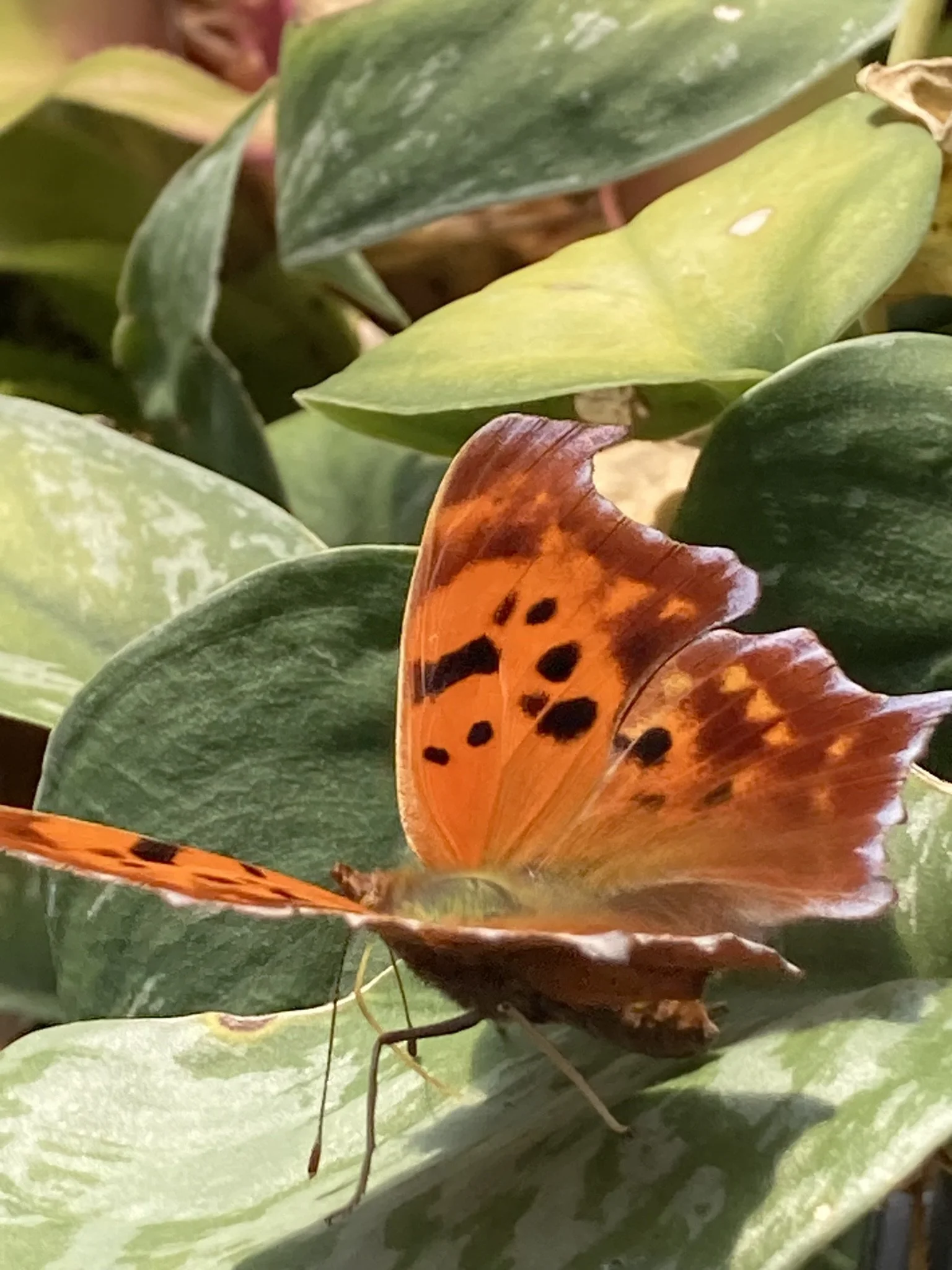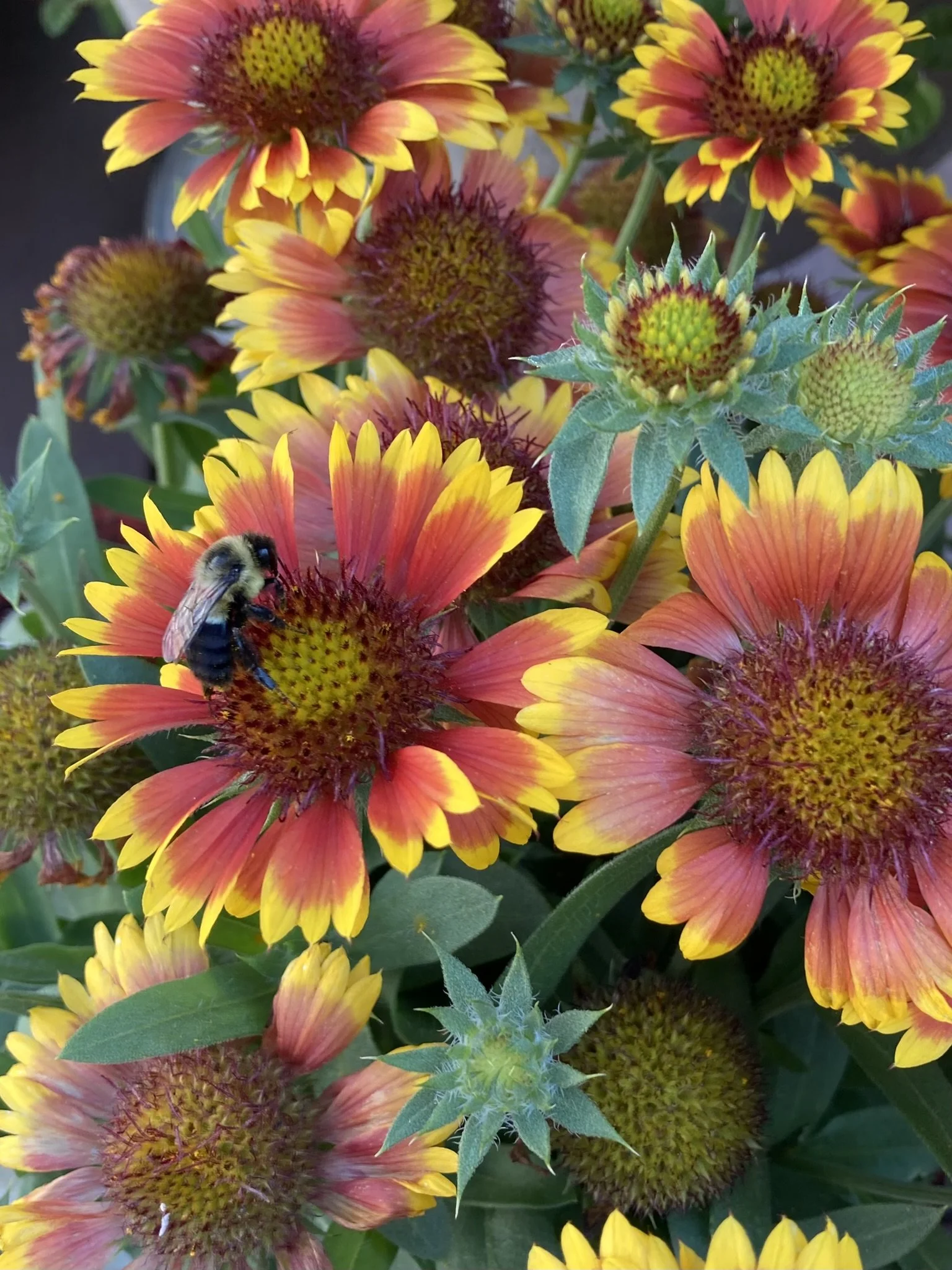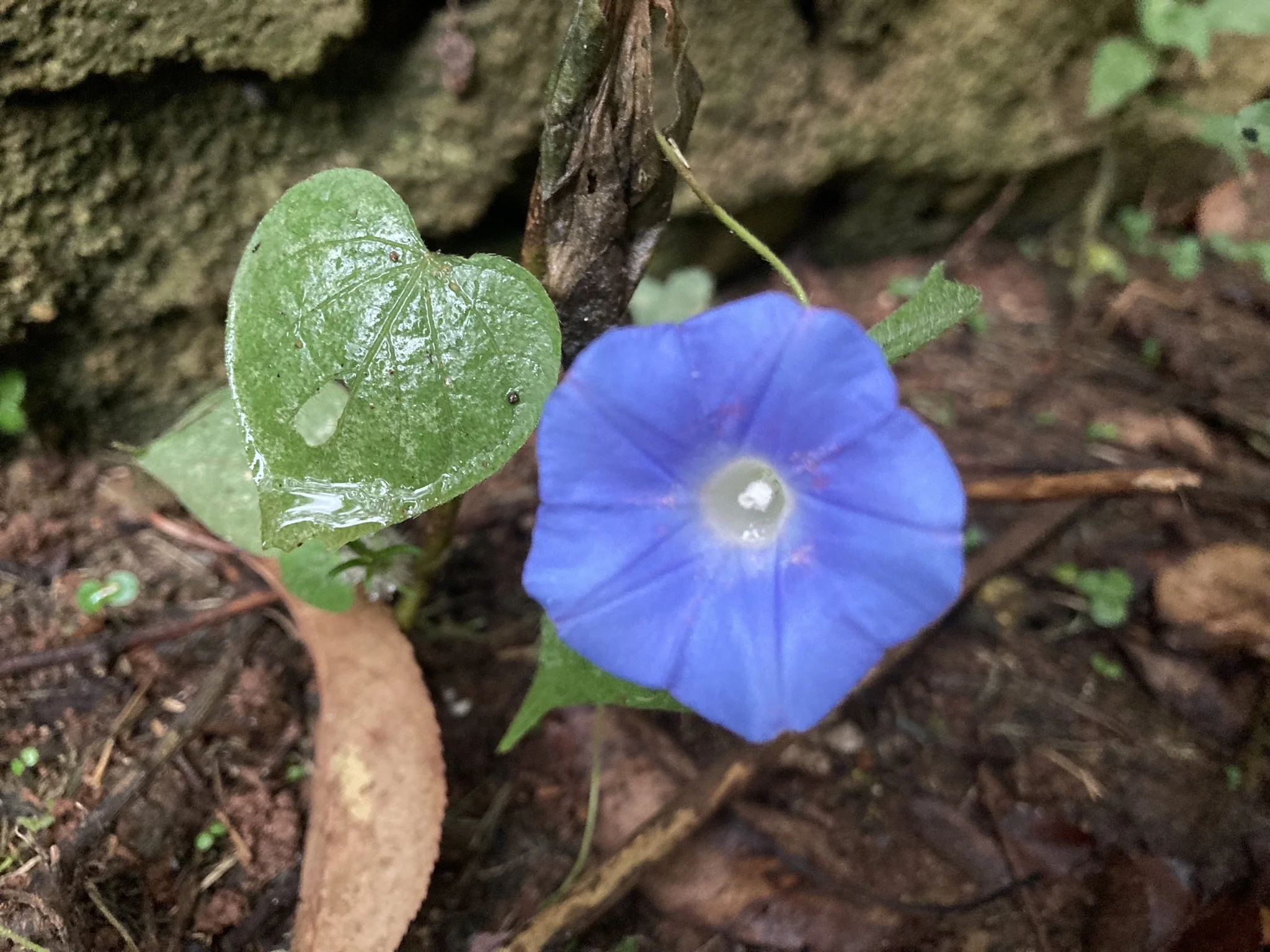Porch Talk
Welcome to Porch Talk by Foothills Plant and Patio - your source for simplified plant care tips, inspiration, and creative ideas for incorporating fresh greens into your style.
Photo Credit: Kendra Martin Photography
October 2025: Fall’s Freshest Duo
Rustic pumpkins and eucalyptus are my current obsession.
There’s just something magical about this time of year. The air turns crisp, sweaters come out of hiding, and front porches everywhere start showing off their fall best. Classic orange pumpkins will always have a place in my heart, but this season, I’ve fallen head over heels for a new seasonal combo: rustic pumpkins & potted eucalyptus.
It’s the perfect mix of cozy and calm. The muted tones of heirloom pumpkins… soft whites, dusty greens, and faded peach… look absolutely stunning alongside the silvery leaves of eucalyptus. Together, they bring that effortless, farmhouse-meets-spa vibe to any porch, entryway, dining table, or windowsill.
When decorating, think in terms of odd numbers, and try nestling a few pumpkins and gourds of different sizes and colors alongside potted eucalyptus. The scent alone is worth it. It’s earthy and clean. Every time I pass by, I can’t resist brushing my hands through the eucalyptus.
This pairing feels both timeless and unexpected, rustic yet refined. It’s nature’s reminder that even as the seasons shift, there’s beauty in balance.
Happy Fall, Y’all!
September 2025: Dreamy Grasses
As September settles in and the heat of summer begins to ease, our gardens and landscapes take on a new rhythm. One of the most striking and versatile additions to any fall garden are ornamental grasses. These plants bring texture, movement, and color to outdoor spaces, and they thrive as summer blooms fade. Their seed heads catch the light beautifully, and their foliage often turns shades of amber, rust, bronze, and gold. Unlike many perennials, grasses are low-maintenance, drought-tolerant, and provide structure to gardens even in late fall and winter.
As we sip our morning coffee or unwind on the porch this September, let’s take a moment to appreciate the gentle movement and warm colors of fall grasses. They are a reminder that even as seasons change, there is beauty in transition.
Top Picks:
Switchgrass (‘Shenandoah’): Upright with deep red foliage.
Little Bluestem: Coppery-bronze prairie beauty.
Miscanthus (‘Morning Light’): Graceful plumes and variegated leaves.
Fountain Grass: Soft, golden bottlebrush blooms.
Design Tips:
Contrast and Texture: Combine the vertical lines of switchgrass or miscanthus with the rounder forms of asters or chrysanthemums for visual interest.
Movement: Grasses create dynamic motion in the garden as they sway in the breeze, making even a quiet porch view feel alive.
Winter Interest: Many grasses hold their form through winter, providing seed heads for birds and a sculptural element for your landscape.
Planter Idea: “Autumn Breeze”
Container: 18–20” wide ceramic or resin planter
Focal Grass:
Switchgrass ‘Shenandoah’ – Upright form, deep red foliage, adds height and movement.
Complementary Fall Annuals:
Chrysanthemums (Mums): Golden yellow or rust-colored blooms for bold fall color.
Ornamental Kale or Cabbage: Adds texture and cool-season interest with purple or green leaves.
Dusty Miller: Silvery foliage softens the arrangement and highlights warm tones.
Planting Tip:
Place the grass in the center or back of the planter as the vertical focal point.
Surround with chrysanthemums and ornamental kale for layered height and texture.
Fill in edges with Dusty Miller to soften the planter’s edges and tie the colors together.
Extra Touch: Add a few pumpkins or gourds around the base for seasonal charm.
July & August 2025: Reflections
I just love the rhythm of summer. In July, I found myself savoring the present — laughter with family and friends, long, golden evenings, and starlit nights inspiring wonder and awe. The flowers were bold, the days were full, and the heat… well, that’s a different subject all together.
As we enter August, I can sense the shift. Summer still lingers, but there is an edge of change in the air. The light softens, the days shorten, and life seems to whisper that it’s time to start gathering myself for the season ahead.
July and August remind me that life is a balance between holding on and letting go. Today, I’m celebrating the beauty of what is while leaning gently into what’s next. And as always, the porch is here, steady and welcoming, offering me a quiet seat to take it all in.
June 2025: For the Love of Ferns
June is here, and if your porch, patio, or shade garden needs a little Southern flair, look no further than the humble fern. These beauties bring texture, grace, and just the right amount of drama—without all the fuss.
Here are four fabulous ferns that thrive in our beloved Zones 7–8, along with some easy care tips to keep 'em looking their best:
Kimberly Queen Fern (Nephrolepis obliterata)
Likes bright, indirect light or filtered shade—perfect for porches and patios.
Water regularly to keep soil moist, but don’t let her sit in soggy soil (she’s not a fan of wet feet).
Japanese Painted Fern (Athyrium niponicum 'Pictum')
Loves dappled or full shade and appreciates moist, well-drained soil.
Give it a little compost in spring for a fresh flush of silver-and-purple fronds.
Foxtail Fern (Asparagus densiflorus 'Myersii')
Thrives in morning sun to part shade and tolerates heat like a champ.
Let the top inch of soil dry between waterings—she’s drought-tough once established.
Ostrich Fern (Matteuccia struthiopteris)
Best in full to partial shade with rich, damp soil—perfect for woodland borders.
Loves a cool drink, especially in hot months—don’t let it dry out too much.
So if you're fern-crazy like me, treat yourself to one (or four) of these gorgeous green gals. Whether you're dressing up a shady bed or sprucing up your porch pots, these ferns will have your yard looking lush in no time.
Kimberly Queen
Foxtail
Japanese Painted
Ostrich
May 2025: Hello, May! Let’s Grow!
May is here, and with it comes longer days, brighter light, and a renewed sense of energy. It’s the perfect time to refresh your space, reset your mind, and give your indoor plants a little extra love!
Here are 3 quick tips to help your plant pals thrive this month:
Give them a shower! – A gentle rinse in the sink or shower helps remove dust from leaves and can wash away pests before they become a problem. Plus, your plants will look instantly refreshed!
Check for roots on the move. – If roots are circling the bottom of the pot or poking out of the drainage holes, it might be time to repot or size up. Happy roots = happy plant!
Feed them! – Spring through early summer is prime growing season. A diluted dose of liquid fertilizer every 2–4 weeks can give your plants the boost they need.
May is all about momentum—so whether you’re repotting, rearranging, or just taking time to enjoy your green space, keep growing forward.
April 2025: Where Does the Time Go?
I blinked—and April was gone! Between plant care visits, spring blooms, and life’s usual whirlwind, I just didn’t have the time to sit down and post. Sometimes, the best-laid plans take a backseat to the pace of the season.
Quick Tip: Rotate your houseplants every couple of weeks so they grow evenly and don’t start leaning toward the light. A simple spin keeps them looking full and balanced!
Here’s to a fresh May, more green moments, and a little more breathing room.
March 2025: Indoor Plants Cure Spring Fever
Wait for it… wait for it… I keep reminding myself that it is not quite time to refresh my outdoor containers and beds, but the warmer weather has me feeling ready to slip on my garden gloves and play in the soil.
To scratch this itch, satisfy my soul, and have a little instant gratification, I turned my attention to the indoor lovelies. As you know, March brings longer daylight hours and subtle shifts in temperature—both of which signal growth for our leafy companions. Here are a few simple ways to keep indoor plants happy as the seasons change:
Refresh the Soil – March is a great time to repot plants that have outgrown their containers. If roots are circling the bottom or pushing through drainage holes, upgrade to a slightly larger pot with fresh soil to support healthy spring growth. We really like Fox Farm Soil and Fertilizer.
Find the Light – The sun is shifting, and so should your plants! Observe how natural light fills your space now compared to winter. You may need to move plants closer to (or farther from) windows to ensure they’re getting just the right amount of sunshine.
Wake Them Up with Water – As the days lengthen, many houseplants start coming out of their winter dormancy. If you’ve been watering sparingly, gradually increase hydration—but don’t overdo it! Check the soil first; if it’s dry about an inch down, it’s time for a drink.
Happy re-potting, friends! May you and your indoor plants march into spring feeling refreshed and ready for a new season of growth.
5 Tips: Preparing the Patio for Spring
Declutter and Freshen Up – Birds clear out old debris before starting anew, and we should do the same. Sweep away winter’s remnants, wipe down surfaces, and clean pots. Give outdoor furniture a good scrub, so your patio feels fresh and inviting.
Nourish the Foundation – Just as birds seek out the perfect soft materials to line their nests, plants need the right foundation to thrive. Refresh the soil in your potted plants, add compost, and check if any need repotting to ensure strong growth.
Gather Your Tools – Take inventory of your gardening supplies—sharpen pruners, gather watering cans, and stock up on potting mix and fertilizers.
Add Life and Color – Consider vibrant flowers, lush greenery, and decorative touches to bring energy to your space.
Create a Cozy Retreat – Find and arrange comfortable seating, add soft lighting like lanterns or string lights, and design a space where you can relax and enjoy nature’s unfolding beauty.
February 2025: February Folklore and Superstitions
February always gets me feeling spring fever, and I associate spring fever with creating beautiful flower beds and containers. Of course, here in the South, we know that planting anything before Easter is a bit risky. So, this got me thinking about other quirky old wives’ tales and superstitions that have been passed down through the generations.
Are any of these a rule of thumb for you?
Mow Monkey Grass on Valentine’s Day - Cutting back liriope on or around February 14 encourages fresh new growth and prevents ragged edges.
February Fog Brings Frost - If we have a foggy February morning, some people believe that means frost is coming in about six weeks.
Prune Roses on President’s Day - Many gardeners follow the tradition of pruning their roses around mid-February to prepare them for strong, spring growth.
Give Houseplants a “Shower” on Rainy Days - The almanac suggests putting houseplants in the sink or shower for a gentle rinse when it’s raining outside to mimic natural hydration.
African Violets and Money - Some believe that if you have African Violets blooming in your home, you will never be broke!
Dust the Leaves on the Full Moon - Dusting off houseplant leaves helps them breathe and thrive. Doing this around the full moon in February prepares them for spring growth.
Aren’t these fun?! So, whether you’re pruning the monkey grass or dusting off a houseplant, these little bits of plant folklore bring joy to each task. Happy gardening, friends. May your February blooms be full of good fortune!
Plant Spotlight: Philodendron Birkin
Meet the Birkin, one of the most stylish and unique houseplants you can have in your space! With its striking white variegated stripes on deep green leaves, it’s a true showstopper. Here’s how to keep your Birkin looking its best:
Bright, indirect light is key – The Birkin thrives in bright, but indirect light. Too much direct sun can scorch its delicate leaves, while too little light can cause the beautiful variegation to fade.
Water when the top inch is dry – This plant prefers evenly moist soil but doesn’t like being waterlogged. Be sure to let the top of the soil dry out a bit between waterings.
Humidity is a friend – The Birkin loves a bit of extra moisture in the air. A gentle misting or a spot in a humid room (like the kitchen or bathroom) can help it thrive.
Slow-growing but oh-so-worth it – While the Birkin is a slow grower, it makes up for it with stunning leaves that will turn heads. Patience is key, but the results are totally worth it!
This beauty brings a touch of elegance to any room, and with a little care, it’ll continue to delight you for years to come!
January 2025: New Year, New Leaves
Start fresh with your plants this year! Dust on leaves can block light and slow growth. Giving your plants a gentle cleaning can improve their health and help them shine. Here’s how:
Tips for Cleaning Plant Leaves
Use a damp, soft cloth to gently wipe down each leaf.
For smaller or more delicate plants, rinse them under lukewarm water in the sink or shower.
Add a few drops of mild soap to the water if the leaves are extra dirty.
Why This Matters
Clean leaves absorb light more effectively, which means healthier, happier plants. Plus, this simple task can make your home feel fresher and brighter!
Suggested Resources & Products
Plant Leaf Cleaner Spray: Leaf Armor by Miracle-Gro
Soft Microfiber Cloths: Amazon Basics Microfiber Cleaning Cloths
Gentle Soap: Dr. Bronner's Pure-Castile Soap
Sunshine, Plants, and Personal Wellness: A Mid-January Boost
As the winter days stretch on, a dose of sunshine can do wonders for both you and your plants.
Natural light fuels photosynthesis, keeping indoor plants vibrant and healthy, while also boosting our mood and energy through increased vitamin D production.
Incorporating greenery into your space enhances air quality and fosters a calming environment, creating a win-win for your plants and personal wellness.
This January, let’s make small adjustments to maximize sunlight and brighten our day—and our home.
Place your plants near south- or west-facing windows to maximize sunlight exposure during shorter winter days.
Rotate your plants weekly to ensure even growth and prevent them from leaning toward the light.
Spend time near your plants to enjoy the soothing benefits of greenery and natural light, which can help reduce stress and improve focus.















